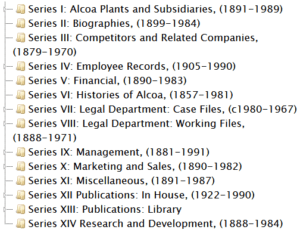Given that the first two well-attested full-scale metal-clad airships (both by David Schwartz and industrialist Carl Berg) were in Russia and Prussia in the 1890s, it should be no great surprise if an American concern built its own similar airship at about the same time.
But entrepreneurs are opportunists; opportunity needs timing; and timing is everything. So what was it about the 1890s and airships? Why was the timing so special?
Affordable Aluminium
In my first post that touched on the 1897 Airship “Flap”, I mentioned that aluminium was the wonder-metal of the second half of the 19th century: but, to be fair, that wasn’t quite the whole story. Though I was correct to say that aluminium had gone into industrial production in 1856, it stayed horribly expensive for decades.
In fact, it wasn’t until 1886 when chemist Charles Martin Hall and his sister Julia discovered (while experimenting “in a shed attached to the family home in Oberlin, Ohio”) how to produce aluminium much more cheaply via electrolysis. The French chemist Paul T. Héroult discovered the same process at around the same time. Ever since, aluminium production has been dominated by the Hall-Héroult Process.
To exploit this new industrial process, Hall initially tried to get backing from investors in Ohio and New York, but without success. Eventually Hall succeeding in bringing together a group of backers including Captain Alfred E. Hunt (a metallurgist whose independent lab served the steel industry) and Arthur Vining Davis; who all on Thanksgiving Day 1888 founded a company called the Pittsburgh Reduction Company.
By 1890, the company had already received an initial investment from the famous Pittsburgh banking family the Mellons: in fact, the Mellons’ shareholding later grew to a third of the whole stock.
By 1891, the company had moved from a pilot site on Smallman Street to much bigger premises in New Kensington, where it started to form aluminium ingots and prefabricated products; and by 1895, it was producing aluminum cookware (such as rust-free kettles). Aluminium frames for bicycles were another big growth area during the 1890s.
Flying machines subsequently proved a focus as well: in 1903, the Wright Brothers’ engine block and crankcase were both made of Pittsburgh Reduction Company aluminium. The company’s aerospace alloy 2017-T4 (developed in 1916) was used for the US Navy’s rigid airship USS Shenandoah.
In 1925, the company listed on the New York Curb Exchange as “Aluminum Company of America”: but you probably have seen the shortened form of its name, still thriving a century later – Alcoa.
Pittsburgh Reduction Company in 1896
For any company or concern in the US looking to make an aluminium airship gondola in 1896 (in time for the airship “flap” in 1897), I think the Pittsburgh Reduction Company was highly likely to have been its supplier. A 290-page book published by the PRC in 1898 (“Aluminum and aluminum alloys in the form of ingots, castings, bars, plates [etc.] (Myers & Shinkle co., printers, 1898)”) describes (in, ummm, riveting detail) just about every aspect (and industrial use) imaginable of aluminium and various aluminium alloys.
If an early customer had – as I suspect – bought a sizeable amount of aluminium from the Pittsburgh Reduction Company in 1896, I think there’s a good chance that a trace of that 1896 transaction remains in the 98 linear feet (191 boxes) of company archives that still exist. These are held by the Heinz History Center, located at 1212 Smallman St, Pittsburgh: “Aluminum Company of America Records, 1857-1992 (bulk 1900-1965), MSS #282, Detre Library and Archives, Heinz History Center“.
Personally, the two sections I’d be most interested in:
- Accounting ledgers / General Ledger #1, 1894-1902 (Shelf Shelf, Volume [2])
- Box 66, Folder 8: Contracts
As always with archives, though, you’re never going to know what’s actually in there until you stick your inquisitive nose in and have a look.

